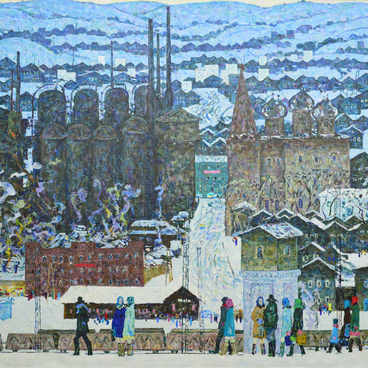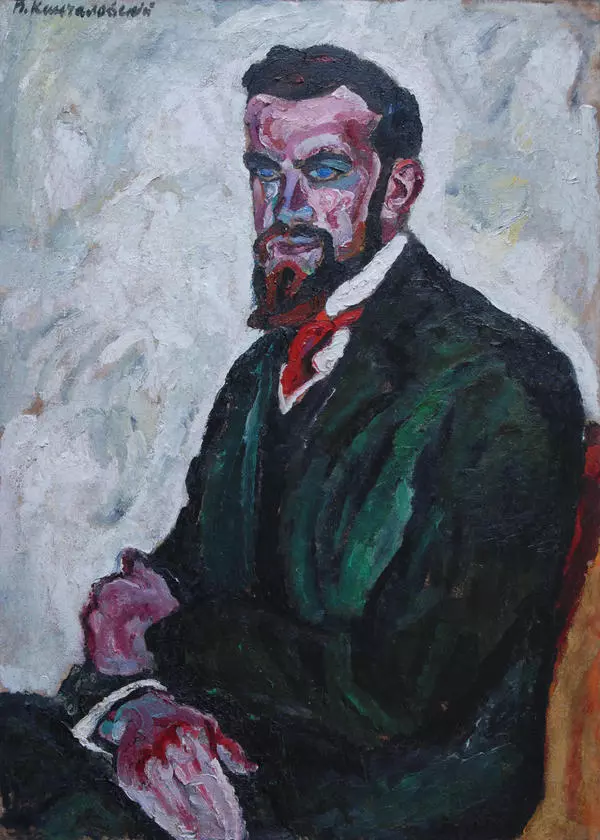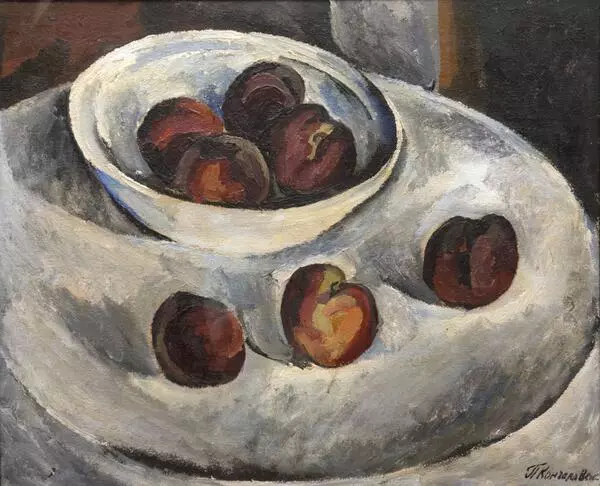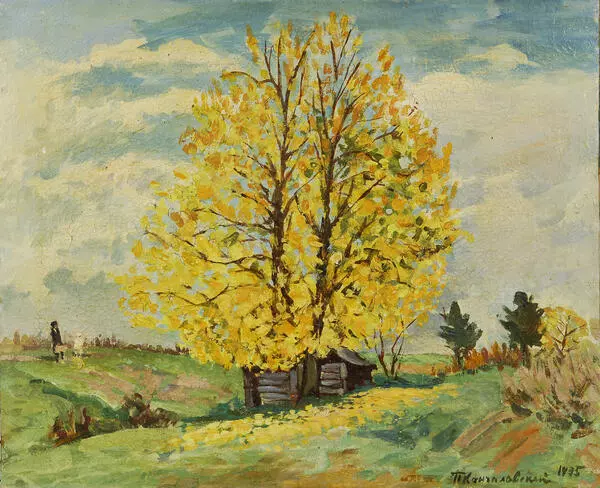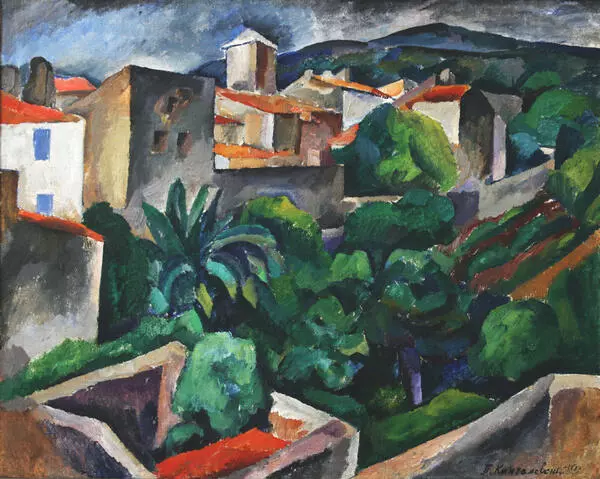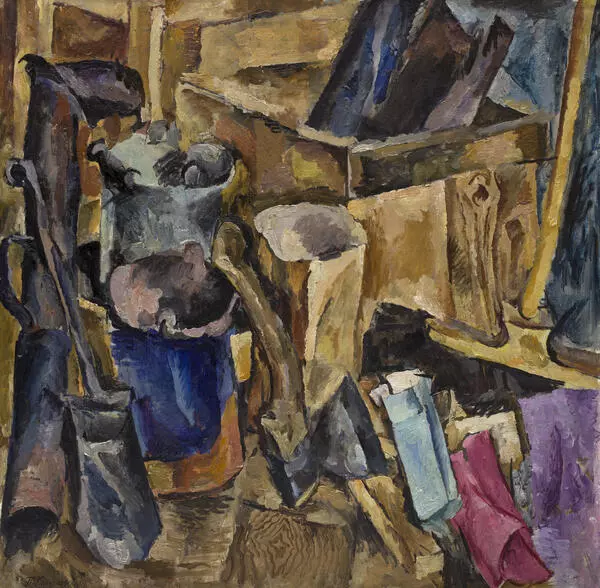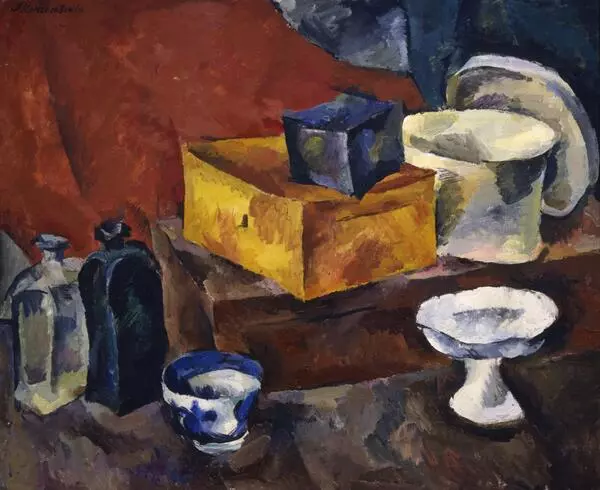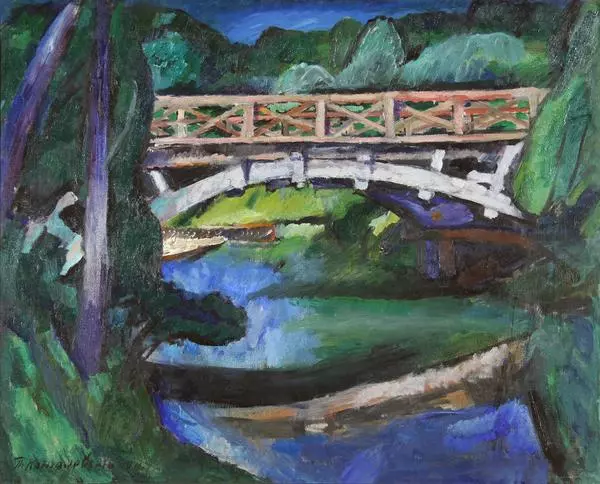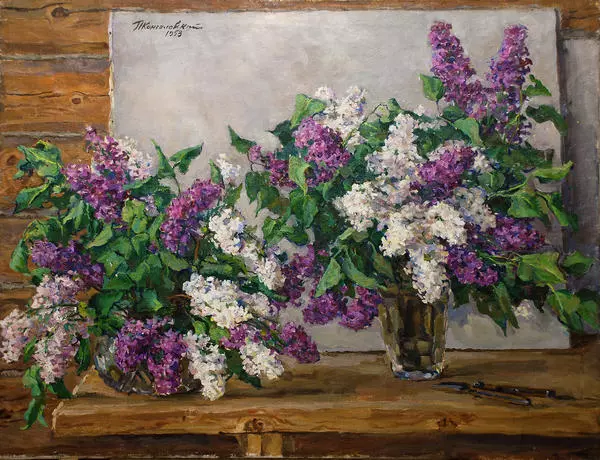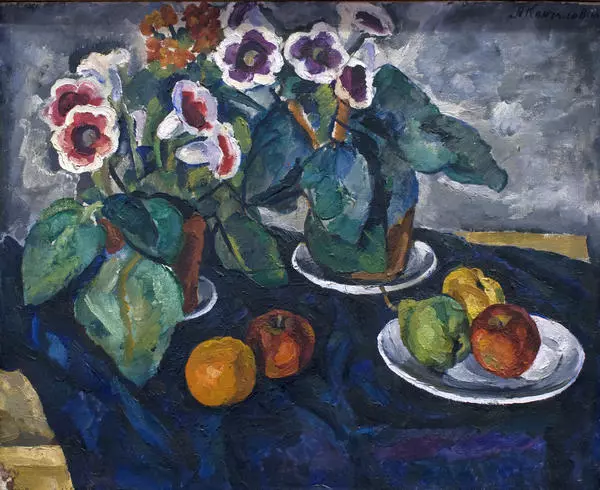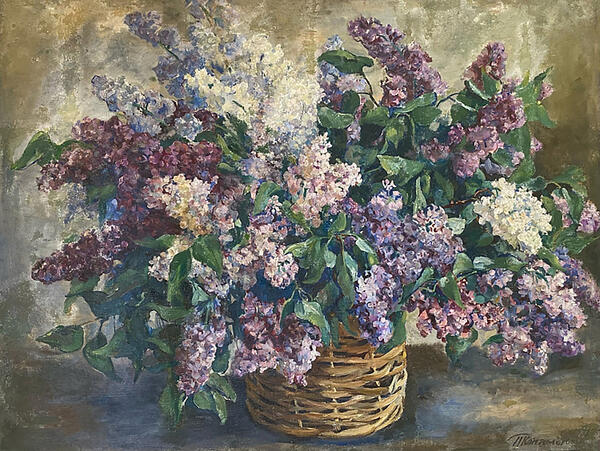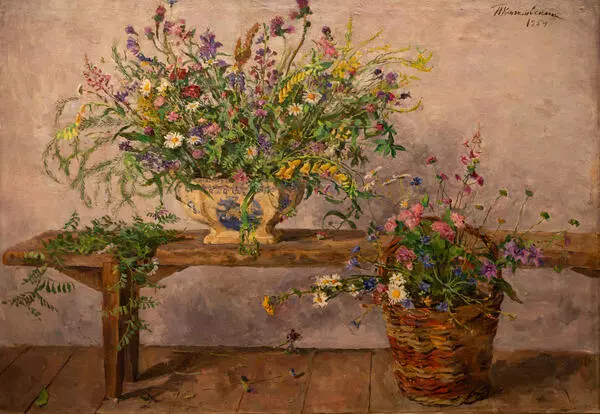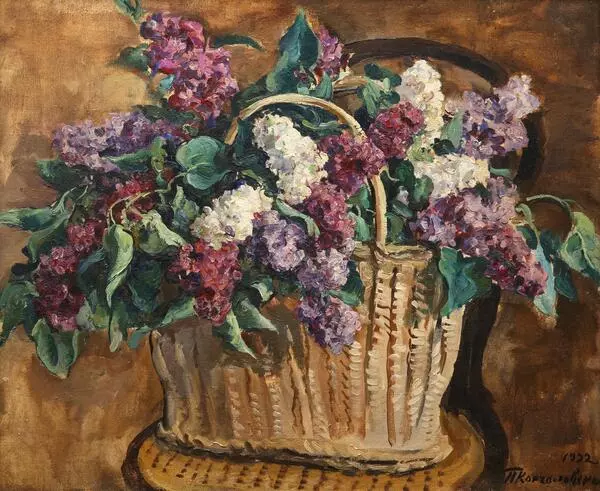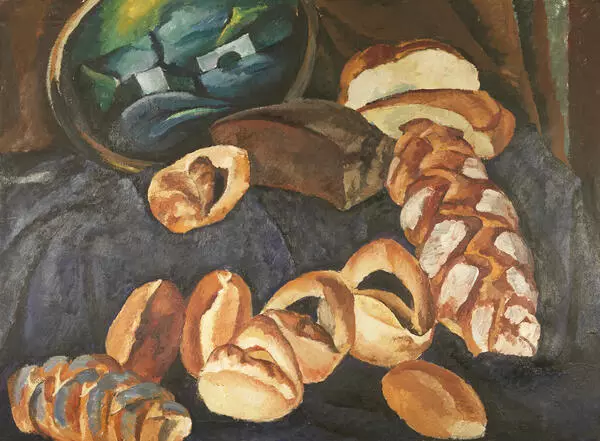‘I know how an artist should deal with the nature. One shouldn’t copy or mimic it, but persistently look for its characteristic features, and if their artistic conception and their emotion requires it, change the visible without any hesitation’, wrote Pyotr Konchalovsky about his attitude to art.
Pyotr Konchalovsky’s creative is remarkable in the context of his time. Being a son of a publisher and a translator, he knew many representatives of the creative elite at the turn of the 20th century, such as Konstantin Korovin, Mikhail Vrubel, Valentin Serov. In 1897-1989 he studied at the Académie Julian in Paris, where he had a chance to get to know the works of modernists. Being under deep influence of Paul Cezanne’s art, Konchalovsky became a founder and a thought leader of Jack of Diamonds art collective. In this art group opposed to the official art he became one of the most prominent representatives of Cezannism. However, in spite of his commitment to avant-garde, the artist had authority with the top Party officials, therefore he had a possibility to arrange personal exhibitions without being persecuted by the press and limiting himself in his choice of subjects.
Still life genre was especially appreciated by Konchalovsky. In the early 20th century it became popular again, as the tendency of excluding the plot and foregrounding the “world of ideas” found in the simplest and understandable forms was building up.
The Still Life from the collection of the Kurgan museum was painted in 1944, during the hard war time. However, by that moment the radical turn in the course of the Great Patriotic War had already happened. The Soviet army launched an offensive, and the country lived in expectation of the victory.
This Still Life was made in an optimistic manner. The table is lit with the sunlight, there are ripe fruits, light dishes, and colourful, absolutely “cezannist” tablecloth. Nothing here tells about the war reality. In this still life, like in many other of his paintings, Konchalovsky paid equal attention both to the colour and the shape of objects. In the painting one can clearly see the texture made with pastose brushstrokes. The artist chose the high angle and built the composition as an unwinding spiral which makes the image more dynamic.
Pyotr Konchalovsky’s creative is remarkable in the context of his time. Being a son of a publisher and a translator, he knew many representatives of the creative elite at the turn of the 20th century, such as Konstantin Korovin, Mikhail Vrubel, Valentin Serov. In 1897-1989 he studied at the Académie Julian in Paris, where he had a chance to get to know the works of modernists. Being under deep influence of Paul Cezanne’s art, Konchalovsky became a founder and a thought leader of Jack of Diamonds art collective. In this art group opposed to the official art he became one of the most prominent representatives of Cezannism. However, in spite of his commitment to avant-garde, the artist had authority with the top Party officials, therefore he had a possibility to arrange personal exhibitions without being persecuted by the press and limiting himself in his choice of subjects.
Still life genre was especially appreciated by Konchalovsky. In the early 20th century it became popular again, as the tendency of excluding the plot and foregrounding the “world of ideas” found in the simplest and understandable forms was building up.
The Still Life from the collection of the Kurgan museum was painted in 1944, during the hard war time. However, by that moment the radical turn in the course of the Great Patriotic War had already happened. The Soviet army launched an offensive, and the country lived in expectation of the victory.
This Still Life was made in an optimistic manner. The table is lit with the sunlight, there are ripe fruits, light dishes, and colourful, absolutely “cezannist” tablecloth. Nothing here tells about the war reality. In this still life, like in many other of his paintings, Konchalovsky paid equal attention both to the colour and the shape of objects. In the painting one can clearly see the texture made with pastose brushstrokes. The artist chose the high angle and built the composition as an unwinding spiral which makes the image more dynamic.
